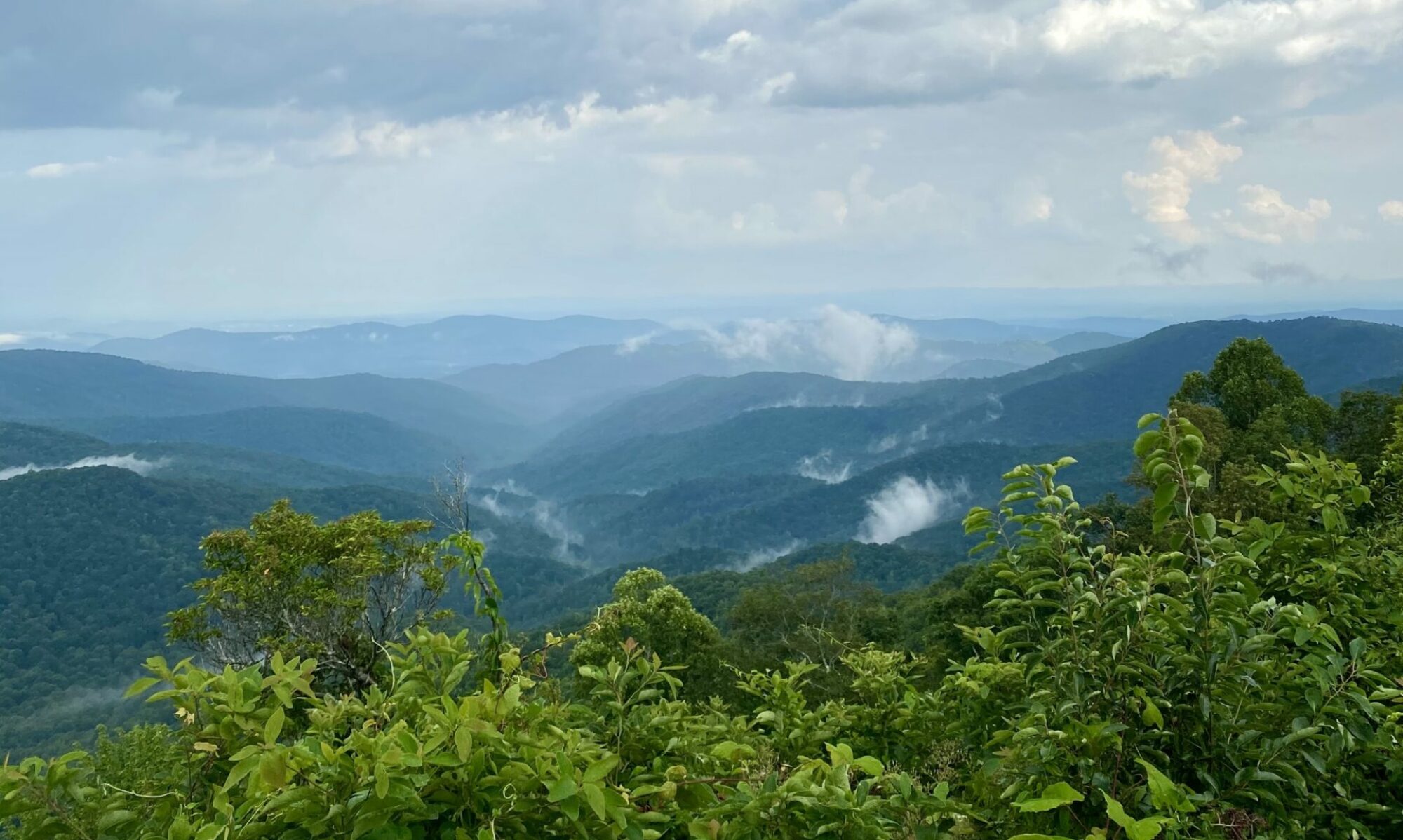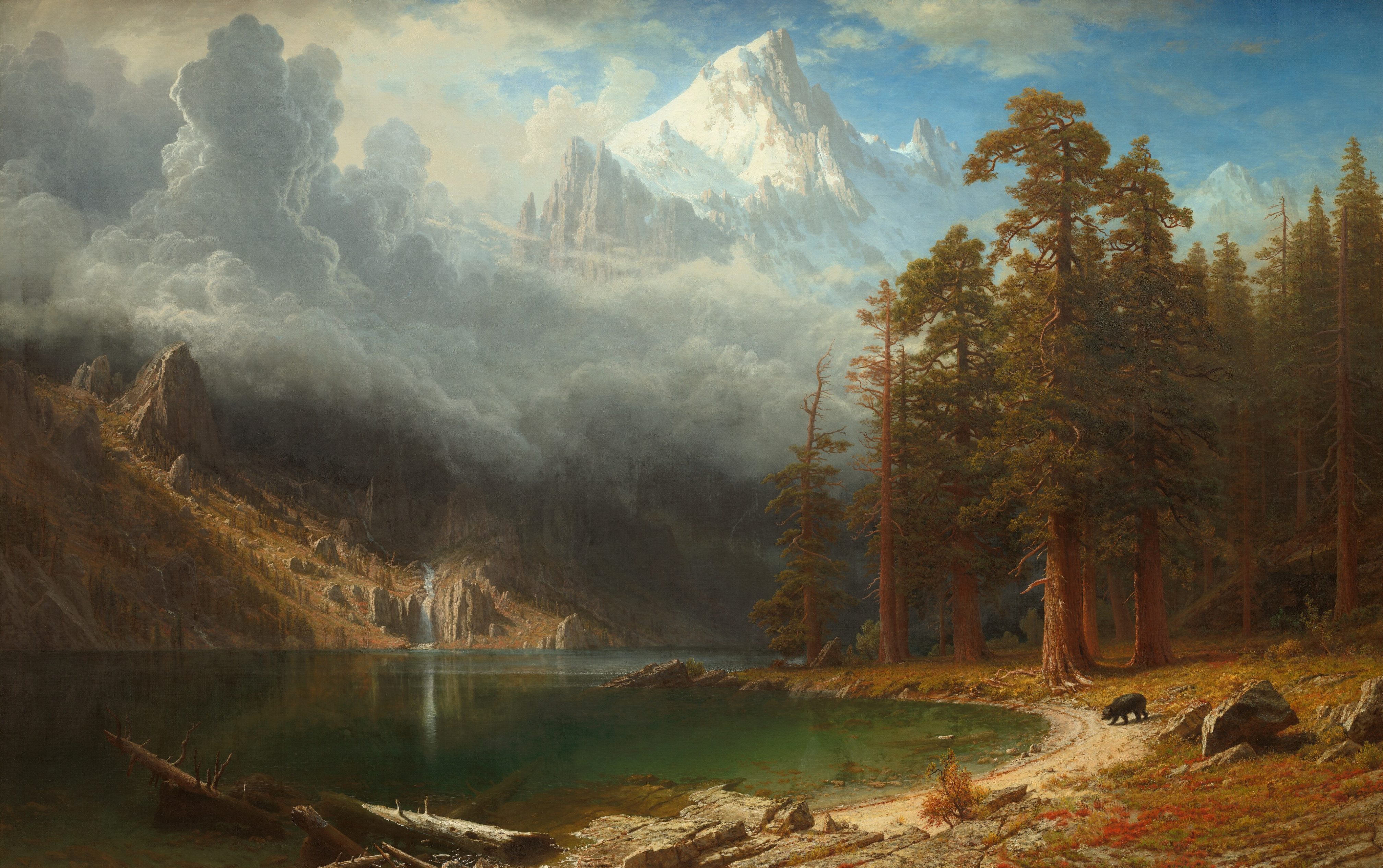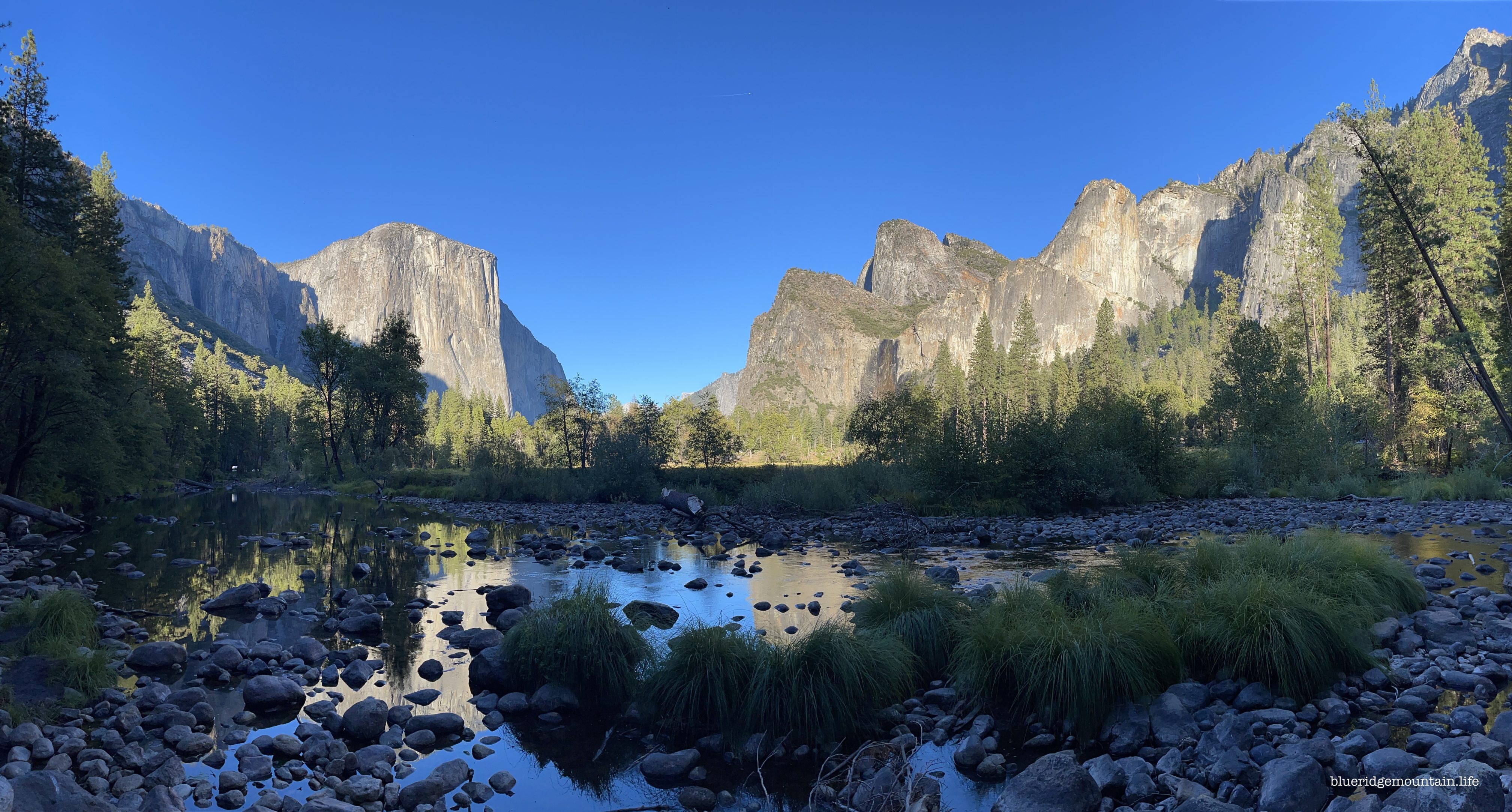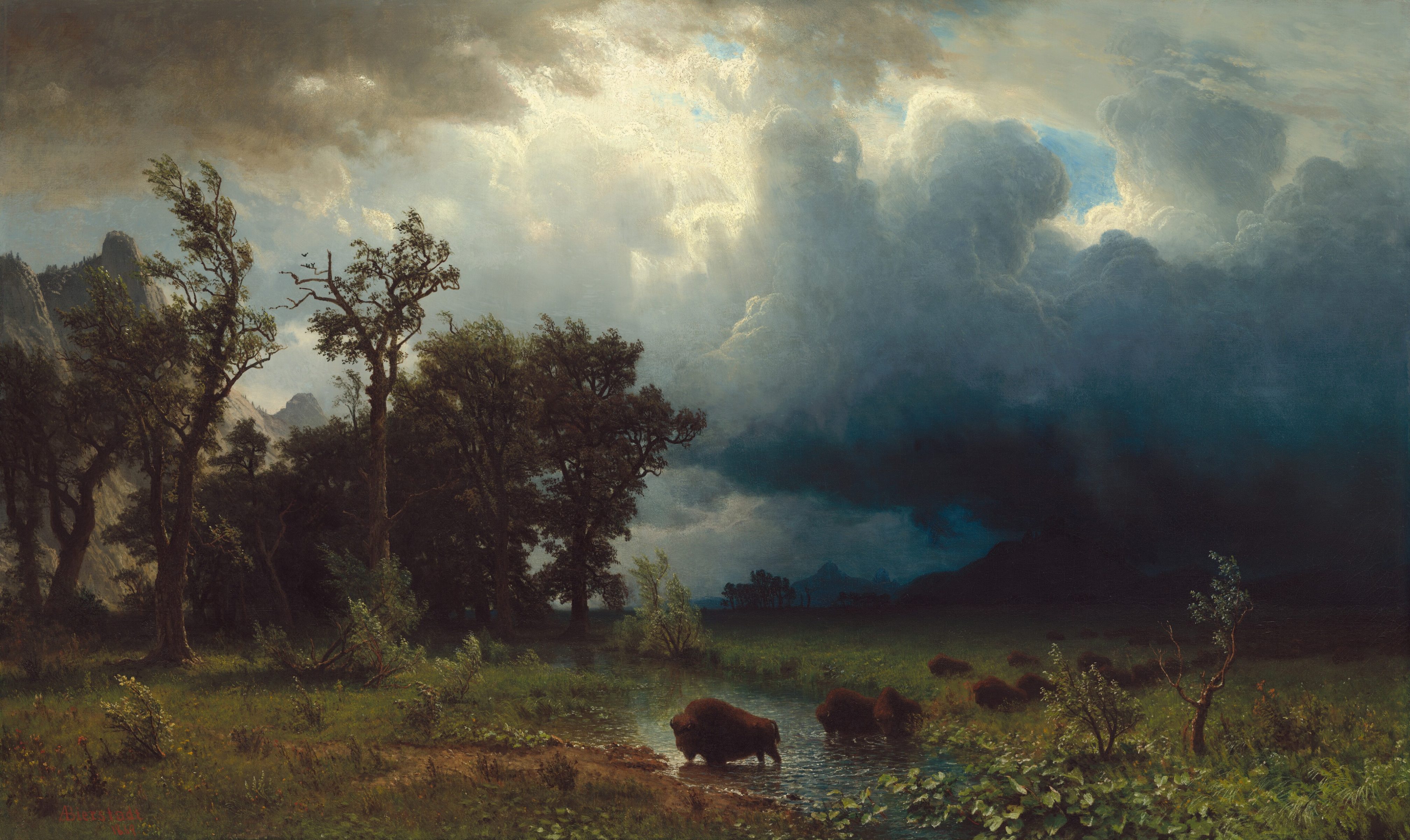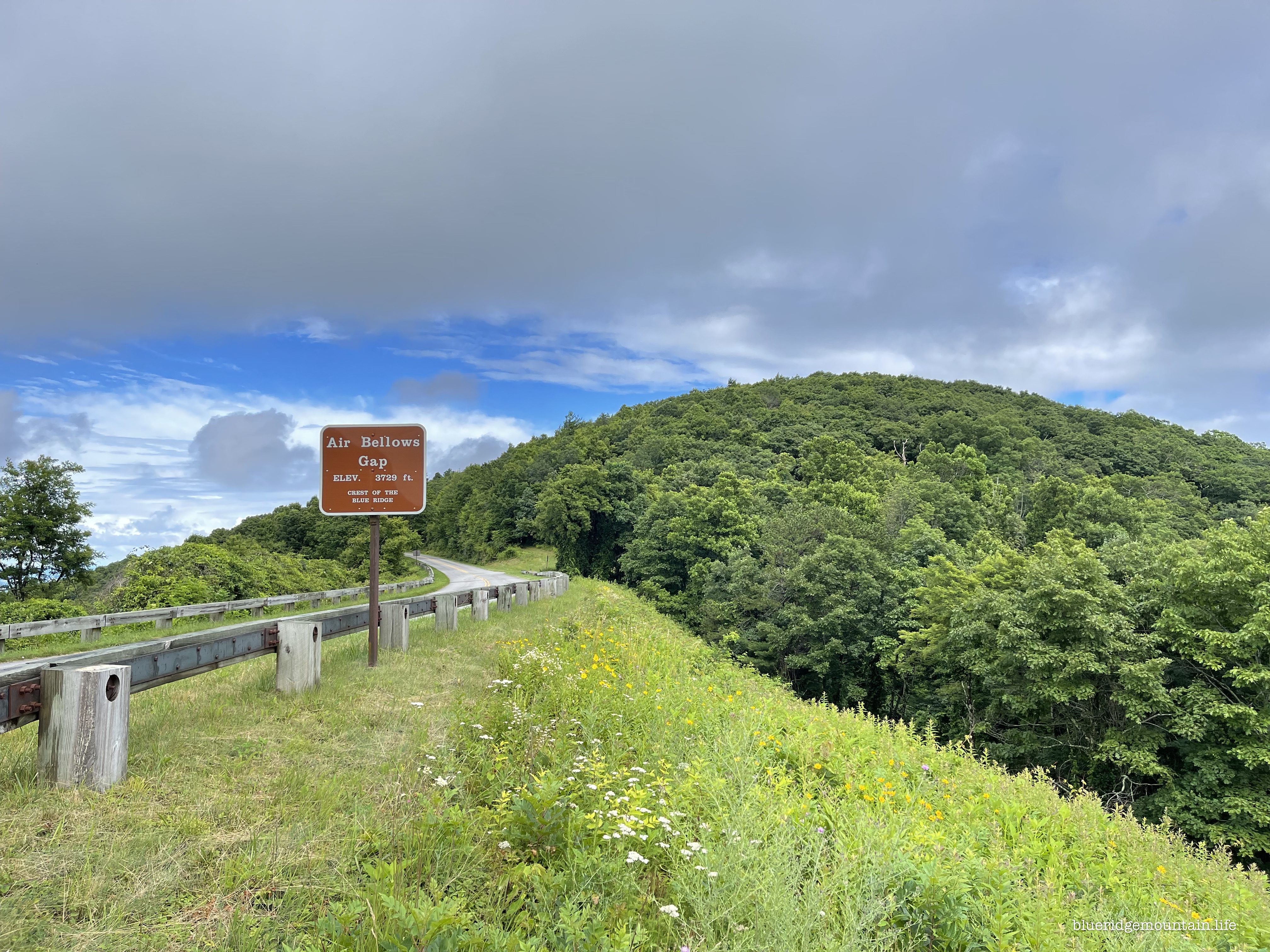(Click on image for full view)
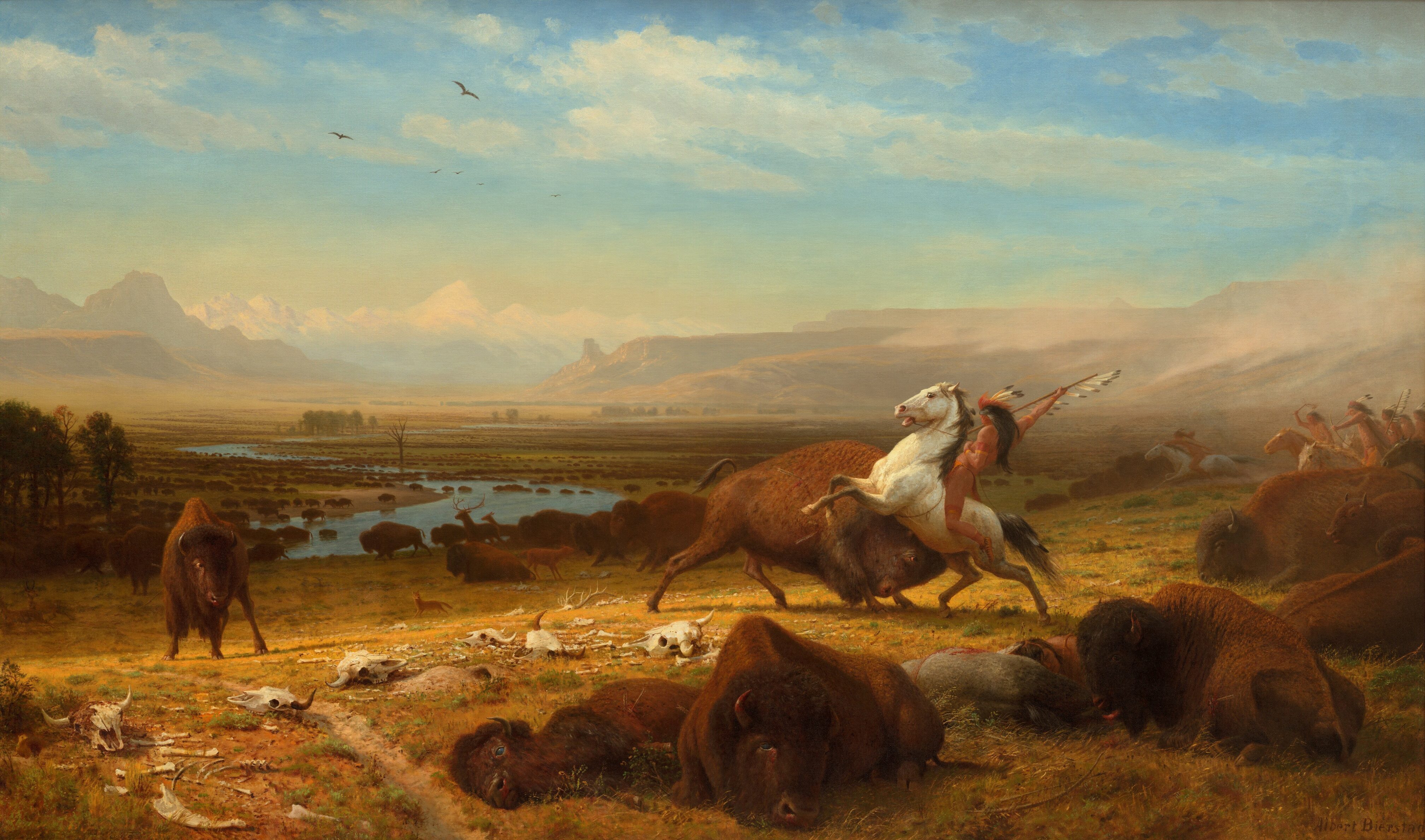
by Albert Bierstadt
Courtesy of the National Gallery of Art
Overview
The Last of the Buffalo is Albert Bierstadt’s final, great, western painting. Measuring six by ten feet, it mirrors in size his first massive oil, Lake Lucerne (1858), also in the National Gallery of Art collection. The ambitious landscape combines a variety of elements he had sketched during multiple western excursions. Because of its composite nature, the view incorporates many topographical features representative of the Great Plains: the dead and injured buffalo in the foreground occupy a dry, golden meadow; their counterparts cross a wide river in the middle ground; and others graze as far as the eye can see as the landscape turns to prairies, hills, mesas, and snowcapped peaks. Likewise, the fertile landscape nurtures a profusion of plains wildlife, including elk, coyote, antelopepronghorn, fox, rabbits, and even a prairie dog at lower left.
Many of these animals turn to look at the focal group of a man on horseback locked in combat with a charging buffalo. In contrast with his careful record of flora and fauna, the artist’s rendering of this confrontation and its backdrop of seemingly limitless herds is a romantic invention rather than an accurate depiction of life on the frontier. By the time Bierstadt painted this canvas, the buffalo was on the verge of extinction. The animals had been reduced in population to only about 1,000 from 30 million at the beginning of the century. Scattering buffalo skulls and other bones around the deadly battle, Bierstadt created what one scholar described as “a masterfully conceived fiction that addressed contemporary issues” one that references, even laments, the destruction wrought by encroaching settlement. However, at about this time, efforts to preserve the buffalo began to garner support. In 1886, when Smithsonian Institution taxidermist William T. Hornaday traveled west, he was so distraught by the decimation of the buffalo that he became a preservationist. He returned to Washington with specimens for the Smithsonian and also with live buffalo for the National Zoo, which he helped establish in 1889 one year after Bierstadt completed this painting.
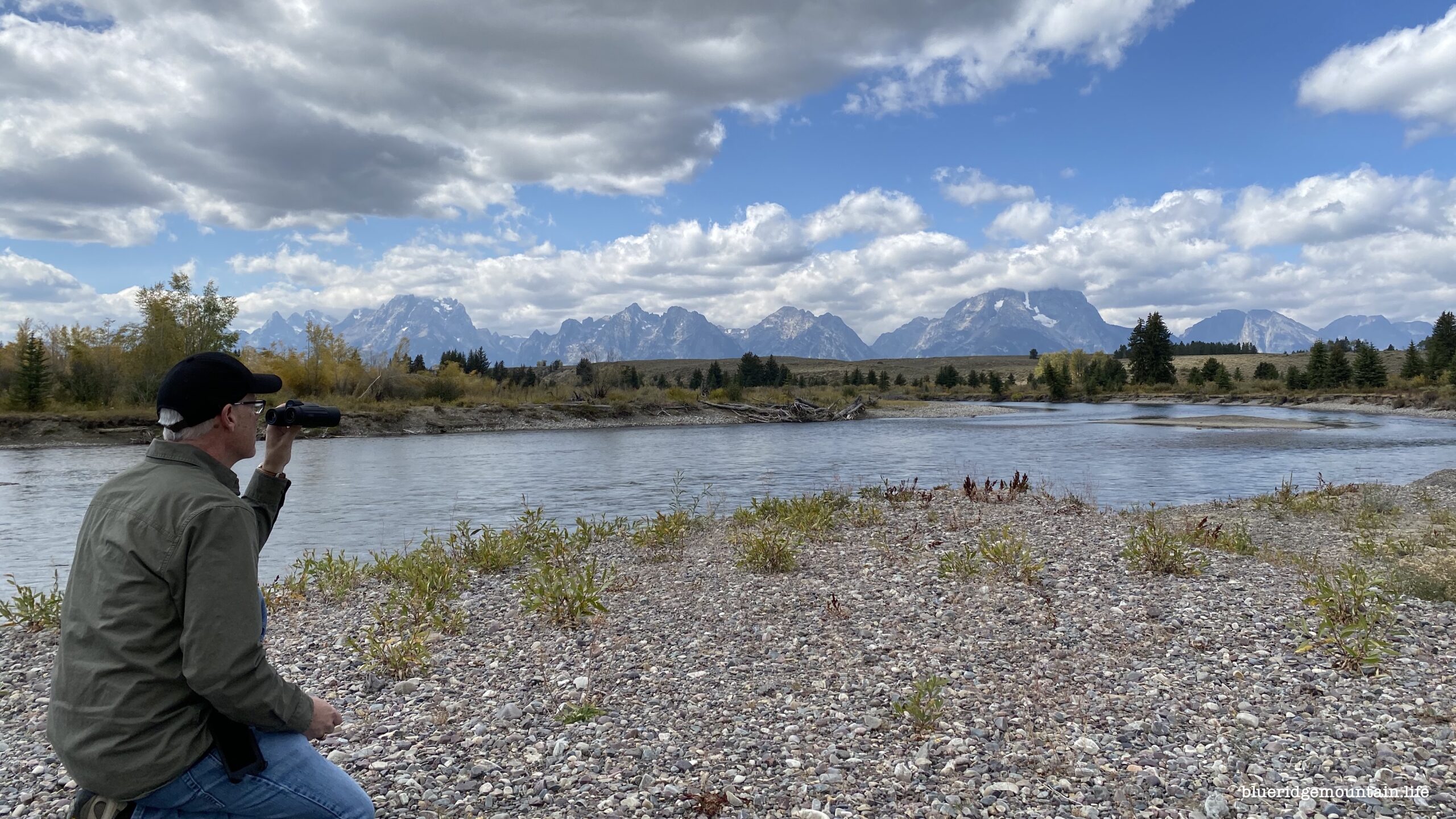
Grand Tetons, Wyoming
blueridgemountain_man
Actually, Buffalo reside in Yellowstone NP. Next door to the Tetons. My binoculars are not that good.
+++
